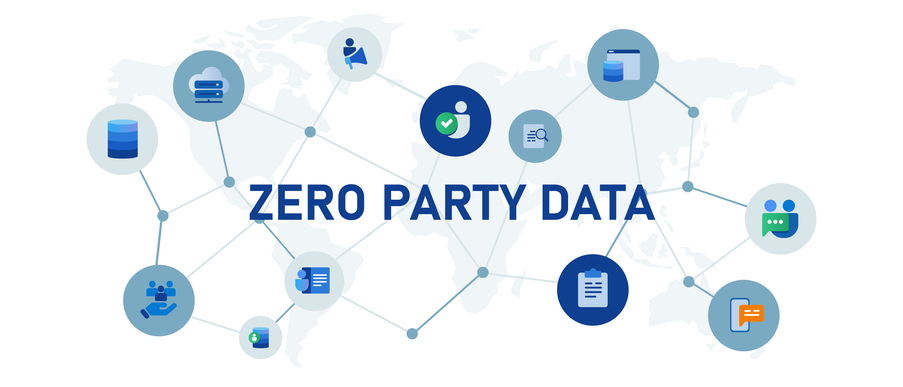Customers stop buying from businesses for all manner of reasons – the rate that they leave is called customer churn.
The worst-affected sectors are those where switching is more common and even encouraged, such as energy and insurance.
Entrepreneurs know that it’s easier to keep customers than attract new ones, so it’s worth investing some time into reducing your level of customer churn.
Here’s an expert and three entrepreneurs to share their expertise and wisdom of holding onto customers.
Kate Cooper, head of research, policy and standards at The Institute of Leadership & Management, explains more about customer churn and what you can do about it.
Many of us have heard of the 80:20 rule, a formula devised by Italian economist Vilfredo Pareto over 100 years ago.
It is used in a variety of ways, but when it comes to customers it suggests that 20 per cent of our customers are generating 80 per cent of our revenue. Ask sales people what they enjoy about their jobs and many include the joy of turning a lead into a deal, getting a new customer. Keeping those customers is less frequently mentioned and we’re often more likely to reward acquiring new customers than we are keeping the existing ones.
Pareto would probably advise that putting energy and effort into retaining the 20 per cent makes better business sense than looking for new customers, but we need new customers because we know that however well we look after our customers, some will leave us. The rate at which they leave is known as ‘churn’.
At its simplest, churn is the percentage of customers we lose in a given period compared to our total number of customers; it’s important to exclude new customers from the calculation.
Just knowing how many customers are leaving is useful information, as tracking the percentage over a number of time periods certainly gives us an overall indication of customer satisfaction but it doesn’t tell us anything about which customers. That requires further investigation.

One of the advantages of buying goods and services from a small business is often the level of customer service they provide. They know their customers and these close relationships may also provide an excuse for not calculating customer churn or looking closely at where most of their revenue is coming from.
But this really is an excuse; however small a business or however well we think we know our customers, some simple, easy to understand analysis is a terrific business tool for tracking what changes over time and, more importantly, flags up areas that raise further questions.
Top tips for managing customer churn
Know your 20 per cent
Who are your important 20 per cent? Undertake an honest appraisal of how likely they are to remain a customer and, just as importantly, consider whether their businesses are growing or declining. Be realistic about the impact and probability of losing them.
There will be some you’ll lose in spite of all your best efforts. This is because they are not future-proofing their businesses.
Incentivise customer retention as much as acquisition
A simple approach is to calculate a realistic attrition rate and reward all sales staff who keep above it.
Yet we all know how tempting it is to measure what we can easily count and ‘existing customers’ certainly comes into that category. Consider what is vital to the success of your business and more difficult to measure, and reward that instead.
For example, how well do senior members of your sales and customer-facing teams pass on their experience? How well do they mentor, support and generously encourage junior colleagues? Consider how you might measure and incentivise those sorts of behaviours.
Calculate your base churn rate
Levels of customer loyalty obviously vary from sector to sector. You know your customers, you have the sales data that enables you to calculate your ‘normal’ rate of churn.
It might be tempting to spend so long gathering customer churn data that you lose sight of what you’re doing it for. You do need a starting point to track the rate at which you are losing customers. Generally speaking, you want to improve on wherever you started from, but only do the calculations as frequently as it makes sense for your business and, more importantly, schedule a regular time to discuss it and agree what you’re going to do about it.
Don’t make excuses for not knowing these numbers
Sometimes instinct can be a great help. We might know, almost intuitively, when a product isn’t working or a customer is about to leave us.
Those instincts are often crucial but talking about ‘instinct’ as the rationale for a decision rarely persuades anybody. Hard data not only helps you focus effort, energy and resources, but is also useful information to provide when you have to persuade others to back an idea or evidence success. Both very important when seeking finance.
Peter Lawrence, director of Human Capital Department

At Human Capital Department we offer a retained support package – this helps businesses that need regular support with HR [People Management & Development] and also helps us as we know that we have enough money coming in each month to pay the bills.
“We were putting too much emphasis on the retained service. We realised that it would have been better to work with them on a one-off project basis”
Until June 2018, we were suffering with a high churn rate of around 30 per cent where customers were leaving us or not continuing with the retained service.
We were putting too much emphasis on the retained service and encouraging clients to sign up to this. We later realised that it would have been better to work with them on a one-off project basis.
Some of the clients were too small to have regular and ongoing HR needs, or in some cases their business plan changed and they re-trenched.
Replacing lost customers
Although we have been able to maintain the retained client numbers it has been a challenge to replace those that have fallen off – with new customers especially – as there tends to be a long lead time from initial contact to conversion because of the long sales process.
Potentially the high churn could have resulted in cash flow problems and although we have avoided these, we have had to make great efforts to attract and win new business.
Our new sales qualification process has meant that we have been less inclined to encourage potential clients to sign up to ongoing retained agreements. Ironically, this has meant that sales have increased as the price per job is better paid than an all-inclusive retained rate.
We have been successful in communicating our ‘value proposition’ by spelling out our offer and being a lot clearer about what we do and what is covered. Clients are now much clearer about what they are getting for their money and what we expect from them in terms of information, payment terms, and level of support. This helps them make an informed choice.
Using a CRM has helped us to identify potential clients and track marketing communication and sales opportunities including outstanding proposals. In the past, it was easy to work hard on enquiries without a clear sense of the likelihood of an enquiry converting into a sales order.
They say it is much easier to get repeat business than win new business – my advice would be to go back to those customers that have not stayed with you and try to get some honest feedback from them. Why have they gone elsewhere? Is there an issue with quality of product, service, delivery or some other explanation?
If you can recognise and address an issue, you may be able to win them back around.
James Thurlow-Craig, managing director of Create Design

During our infancy, the company began as a freelancer duo and like most freelancers, we were working month-to-month to keep afloat, trying to complete projects as quickly as possible and move onto the next.
While the quality of work was good, we had very little time available to assist customers after the website had been launched. This was simply because we were out looking for our next project. Furthermore, ongoing support is often something which is difficult to justify as an additional cost to many start-ups because they feel it should be included free.
As such, we would offer six months of free hosting and then after that period, it was just £6.99 a month – something which we later realised was entirely unsustainable. This meant that customers would regularly move to no-frills cheap hosting with another provider, leaving us with a very high churn.
“Customers would move to no-frills cheap hosting with another provider, leaving us with a very high churn”
We later realised that finding a new client is considerably more time-consuming and expensive than retaining existing customers as a revenue source. As such, we more than doubled the cost of hosting which allowed us to spend more time supporting customers and providing value for money.
Steady improvement
Over the years, we’ve steadily improved this and very much sold our monthly support packages as a value proposition, focusing on the additional revenue and sales which they can generate by making sure that their website loads quickly, is always online and if there is a problem, it’s resolved painlessly and urgently.
For example, if a recruitment agency’s website is offline for 48 hours and they usually receive two to three leads during that time, that has the potential to have lost them thousands of pounds in business, for the sake of saving £150 over the year.
Ultimately, customer churn reduction has been the key to our growth – it’s ten times easier to generate revenue from an existing relationship than a new one.
Phone calls and emails are the main source of contact with a client. While we do offer office appointments for larger projects, it’s a far smoother and cost-effective process to transact through email and telephone.
With the introduction of GDPR, we’ve had the huge task of working with our clients to educate them as best possible and work with them to ensure that their websites and communication is compliant. We manage over 500 websites and each website now typically requires at the very least a privacy policy, opt-in pop-up and opt-in boxes on forms. To better educate, we attempted to call each customer and we also wrote an article on how GDPR affects businesses.
In such a saturated industry, with low barriers to entry and competitors all over the world, there is the constant urge for businesses to focus their proposition on the price just to close a sale.
Experience has taught us that customers in our industry who are blinded by finding the lowest price – instead of the best value – do not make good clients. This may sound counter-intuitive as in most cases it’s good practice to find the lowest price for a product.
However, web design is a not a product: it’s a service. Many start-ups and small businesses should always consider how much value having a professional website design can be to build trust, generate leads and increase conversions. After all, is a visitor going to trust a restaurant who has cut corners with an amateurish website?
Time is money
I think our industry is probably one of the worst for customer churn! Unlike many industries, web design is a relatively high-value service which is particularly susceptible to high customer churn.
I think the main reason why churn is traditionally so high is quite simply down to lack of understanding and awareness from the customer as to what they’re actually purchasing. Essentially, the cost for web design is primarily down to a designer or developer’s time. Many customers don’t realise that the average salary for a mid-level web designer is around £25-£30,000pa.
Once you’ve worked out how many hours it takes to manage a website project, design and then build it, it becomes clear that paying £200 for a website isn’t going to leave more than 3-4 hours design and development time.
As such, freelancers from the UK and abroad are able to undercut more reputable agencies. This tends to come at a price though: freelancers come and go, they’re often juggling infinite tasks and trying to run a business at the same time, so when it comes to after-sales support, adjustments or minor ad hoc work, things break down – badly.
With such a lack of trust in the industry, no governable standards and often naïve customers, relationships can very quickly deteriorate. I’d go as far as to say one in three of our clients have had a bad previous experience with a web design company in the past.
A nation of dreamers
The UK definitely has no shortage of ‘wantrepreneurs’ who have their million-pound ideas written on the back of a coaster, but anyone new to business really needs to first consider how they are going to get the exposure they need to generate sales and whether there is anything truly unique about their idea before they invest blindly.
Many of our competitors have a relatively hard sale approach to selling a website. We’ve been equally guilty of it in the past when we first began. We’ve realised that by educating and providing advice on how to set up their business, we’ve actually increased our conversions and built rapport very early on in the relationship.
When speaking to a prospective customer, one of the first questions we ask is ‘what is the actual reason for the website?’. It’s usually because they want to generate leads or telephone calls and at that point we can then dig further to find out if they’ve considered how anybody is going to find their website.
By providing some value in educating the customer, they begin to trust us and appreciate our experience.
Reggie Johal, founder of Predator Nutrition, talks about how he dealt with customer churn in his company.

We were seeing churn from a substantial number of online transaction declines. Customers across our international markets were coming to our site, choosing their products and entering their card details, only to be turned away.
We could see customers were trying four, five, six times! Our initial payments provider would send us vague ‘do not honour’ messages and we just couldn’t understand why these good customers were falling at the last hurdle.
The issue came down to the cardholder’s bank deeming a purchase overseas suspicious, so they’d prevent the payment. It’s a common problem for e-commerce businesses, particularly in the US. You need a more localised approach to navigate the banks’ caution towards foreign transactions over there.
If, as a customer, I found a specialist small retailer but was turned away at the checkout, I’d lose faith quickly and would probably go to Amazon or somewhere familiar. We knew that declined customers would be doing exactly that and could see the impact on our sales performance.
The next steps
We decided to switch provider and localise our approach to payments. Our new payment partner enabled us to compete on a more level playing field from a technology standpoint, meaning we could build on our own unique brand proposition and exclusive range of products.
“We’ve seen conversions rise by 20 per cent while falsely declined transactions have shrunk dramatically”
Aside from our ambition to accept more legitimate transactions, we also wanted to reduce our cart abandonment and encourage more customers to complete the purchase. We changed our approach to offer each customer in each market a familiar, secure checkout in their own language and currency, with a selection of local payment options.
The difference has been remarkable. We’ve seen conversions rise by 20 per cent while falsely declined transactions have shrunk dramatically. The new setup has also expanded our horizons significantly, we can now look across the globe with the knowledge that we can accept localised payments in almost any market.
Unique products and personal service
My advice for anyone, in any type of business, is to focus first and foremost on delivering unique products, ideally the kind where you cannot simply buy from Amazon.
Ally that to a more personal service that offers professional advice and makes customers feel that their goals are genuinely cared about. Once loyalty is established through these initiatives, customers will be far more forgiving of any glitches.
With these principals in place, we were able to bounce back from our initial checkout teething problems, and our online business is now growing from strength to strength.





